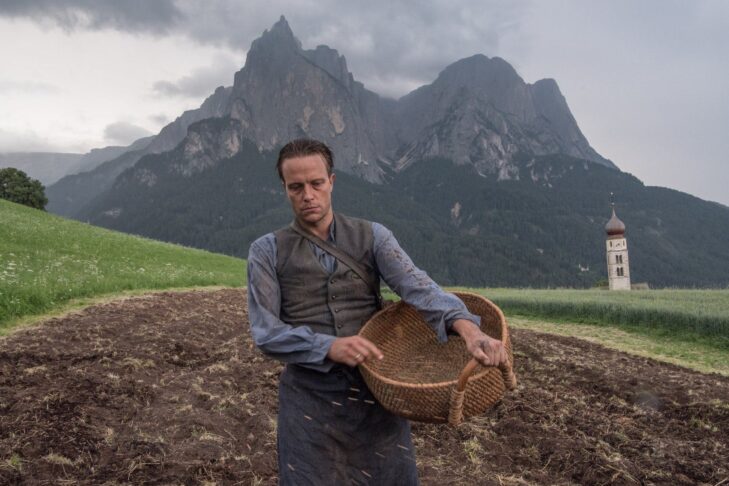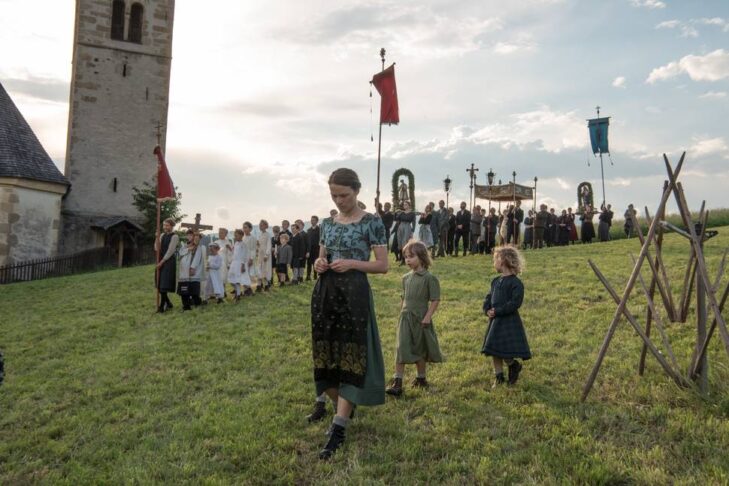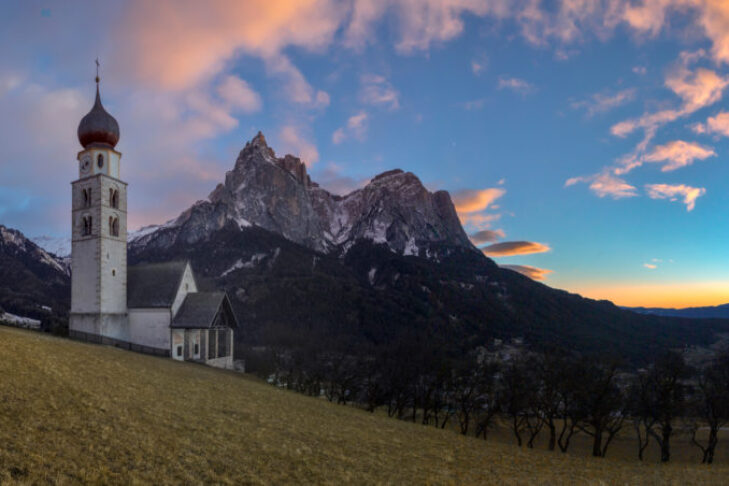The title of Terrence Malick’s gorgeous and quietly devastating new film “A Hidden Life” is based on a quote from the 19th-century novelist George Eliot. Eliot evokes the infinite ways that ongoing acts of moral courage throughout history are inevitably forgotten: “…[T]he growing good of the world is partly dependent on unhistoric acts; and that things are not so ill with you and me as they might have been, is half owing to the number who lived faithfully a hidden life, and rest in unvisited tombs.”
“A Hidden Life” is the true story of Franz Jägerstätter’s refusal to swear loyalty to Hitler during World War II. Franz (played by August Diehl) is first called up for military training in 1940 just after the Anschluss. In spite of his misgivings, he reports for instruction, believing the war will soon end. A few years later, he has been called up again, this time for actual military service, and decides he cannot swear allegiance to Hitler or the Third Reich. Franz is aware that his choice will result in hardship for his wife, Fani (Valerie Pachner), and their three daughters. They will be ostracized in their Austrian village Radegund, and Franz’s death will be inevitable.
At a running time of three hours, “A Hidden Life” is an unfurling of an ordinary life made extraordinary by Franz’s moral and spiritual fortitude. Franz and Fani love and work at the foothills of the Alps in what could be described as a snow globe sort of place. Their domestic intimacy, which belies their love story, permeates the film. In an early scene, the family plays a carefree game of “blind man’s bluff.” A blindfolded Franz tries to find his wife and daughters, who circle around him banging spoons against tin cans in an effort not to get caught. It’s impossible not to see the moment as a foreshadowing of things to come. War is on the horizon, and hate is about to poison the Jägerstätters’ daily lives after their fellow villagers learn of Franz’s refusal to serve in the Austrian army.
The Catholic Church offers Franz no support or succor. The priests are either compliant or Nazi sympathizers. Malick is subtle about comparing Franz to Jesus. But there’s always the underlying question of whose side you would have been on in Christ’s time. To that end, an answer is hinted upon early in the film when Franz visits his friend, who paints biblical scenes in the town church. The painter tells Franz: “I help people look up from those pews and dream. They look up and they imagine, what if they lived in Christ’s time? They wouldn’t have done what the others did.” For Franz, it’s both an extraordinary realization as well as the challenge of his life.
And yet the film’s audience witnesses people who shun a man opposing arguably the greatest evil in history. It’s never explicitly stated that Franz knew about the Holocaust, but Malick leaves little doubt it would have appalled him. The painter says as much when he indicts the townspeople. “They would have murdered those whom they adore,” and we know deep in our hearts that he is right. The Church declared Franz a martyr in 2007 and beatified him later that year. However, throughout most of the 1990s, the Jägerstätters were still outcasts in Austria and considered traitors by their fellow citizens.
Throughout Franz’s imprisonment, Fani’s hardships included a bone-tired weariness as well as a heavy spiritual malaise. Malick juxtaposes those subtle yet explicit scenes with the deteriorating social conditions with which Fani must contend. In one telling moment, she tries to attend church, but the parishioners stare at her until she feels she must flee from their harsh gaze. Others spit on her as she walks in town. In another scene, her daughters have clearly been excluded from receiving their First Communion. The girls, wearing their everyday clothes, are rejected by angelic-like children in white and their Sunday best. That scene, a hallmark of the quiet devastation that envelopes this film, is a clear statement of how chillingly easy it is to normalize evil.
Franz remains steadfast until the end. He’s given the opportunity to end his incarceration by signing a statement that, in effect, he has been mistaken. He refuses and faces the guillotine. As is Malick’s way, the scene is not graphic but disturbingly suggestive; the guillotine is a monstrous character in a dark, dank room that the Germans have fastidiously cleaned from the prior execution. In keeping with the film’s tone, it’s a subdued scene that nevertheless takes your breath away. Throughout the film, Malick has offered bucolic scenes that bump up against notions of earthly paradise and instead present images of ongoing suffering and deep pain.
My only quibble with this extraordinary film—a film I believe is destined to become a classic—is the granular, black-and-white images of actual footage of goose-stepping Nazi soldiers and Hitler barking in German. These images are jarring and interrupt the flow of an otherwise carefully unfolding story that earns every minute of its three-hour run.
“A Hidden Life” is playing in select cities nationwide. Find tickets and showtimes here.






